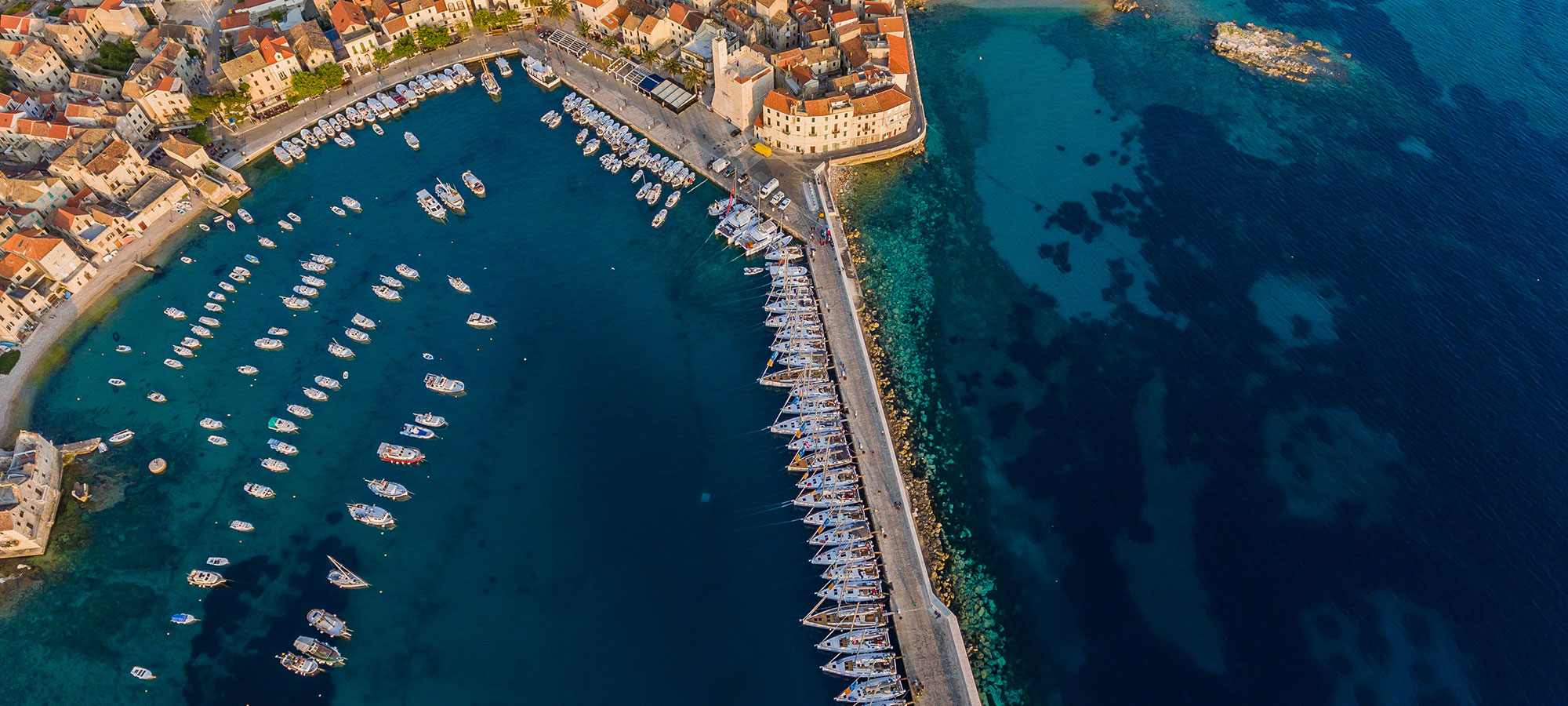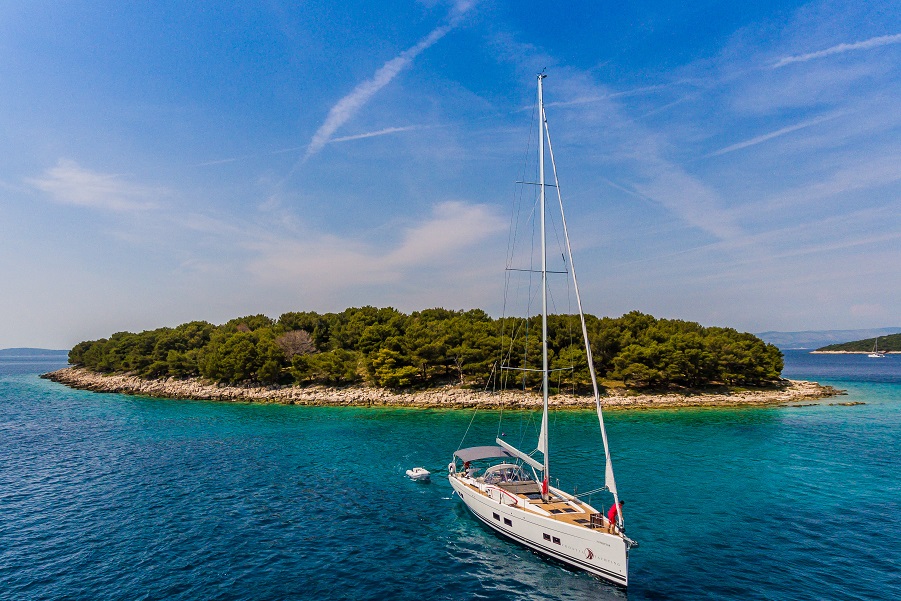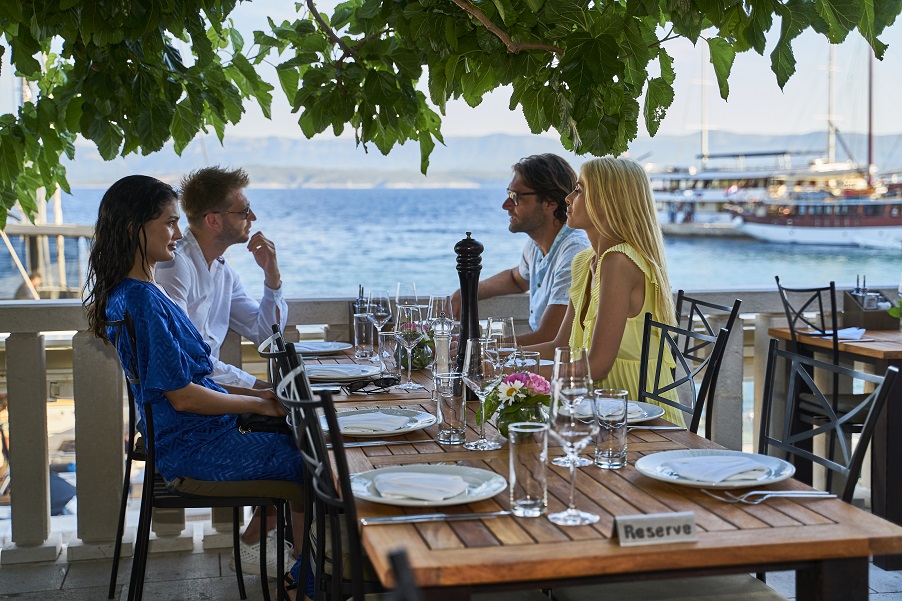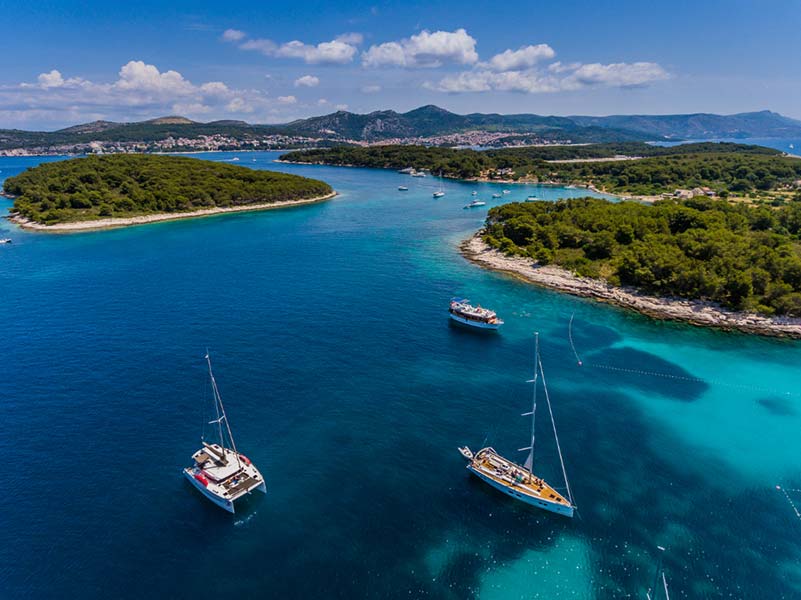Komiža: A Town Made by Fishermen

Komiža is a small island town that has been a center for fishermen in the Adriatic since the Middle Ages. Today, its red rooftops decorate a forested green backdrop, while colorful window blinds adorn rustic sea-facing stone houses.
It is a dream destination for sailors, tourists, and locals who endeavor to keep its charms concealed from the footprints of foreigners, just as the island of Vis once was during the times of Yugoslavia.
It is a town that cradles its ancient customs, offers authentic experiences, and embraces the fishing craft that has given it fame. But to better learn about how Komiža became a hub for fishers over the centuries, we must first get to know the island that gave life to this town of trawlers.
Komiža on Vis Island
Komiža is located on the island of Vis, the farthest inhabited island off the Croatian mainland, strategically located on the open sea. Surrounded by smaller islands and islets, Vis neighbors the better-known Korčula and is separated from the island of Hvar thanks to the Hvar channel.
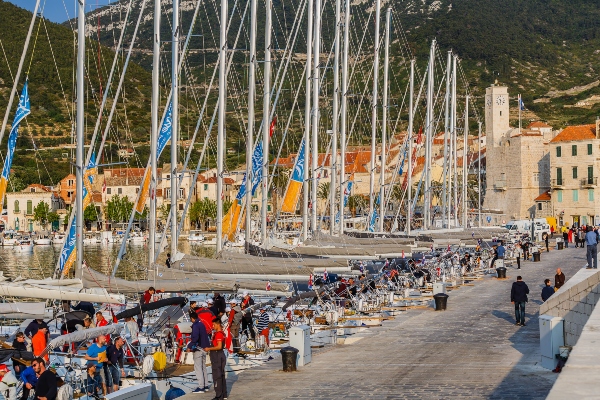
A relatively small island measuring just 90 square kilometers, Vis was first settled in 3000 B.C. Greek tyrant Dionysius the Elder founded the colony Issa on the island in the 4th century BC. Ruled by the Liburnians in the 1st century BC, it was the Republic of Venice that developed the settlements on the island we know today - Comisa (Komiža) and Lissa (Vis). The Venetian influence on Vis is still heavily felt.
After the Napoleonic Kingdom of Italy, the Austrian Empire, and Italian rule again during World War I, Vis finally became the Kingdom of Yugoslavia in 1921. Vis’s strategic location is best shown in the example of Yugoslav Partisan leader Marshal Josip Broz Tito, who used the island as his general headquarters during World War II. After the war, the Yugoslav People's Army continued to use Vis as one of its main naval bases, which closed the island off to foreign visitors until 1989.
Once the island finally opened to tourists in the 1990s, its Adriatic charm didn’t take long to catch on. In addition to agriculture, fishing, and fish processing, tourism has become one of the island’s leading industries.
Komiža - a town ruled by fishermen
Even though the island of Vis has seen many rulers and occupations, only one has controlled the town of Komiža - the fisherman. And it’s no surprise as to why.
Komiža is situated on the western side of Vis Island, in the indented Bay of Komiža. It is separated from the rest of the island thanks to the 600-meter-high Hum mountain, the island’s highest point. Because it is isolated from the rest of the island with limited agricultural land, Komiža’s inhabitants were forced to look to the sea and reap its riches. A foolproof solution as Komiža’s waters are abundant in bluefish, the nearby Jabuka is a famous tuna hunting ground, while lobster and quality white fish are found in the Vis archipelago. Thus, Komiža is where fishing on the eastern Adriatic coast was born.
While records show that Komiža was first mentioned in 1145, it is believed that Benedictine monks arrived even earlier from the nearby Biševo Island, building a Romanesque church and monastery today known as the parish of St. Nicholas. Komiža was also the first Croatian town visited by a Pope, as fishermen transported Pope Alexander III from Palagruža to Komiža, who was caught in a storm on his way to Venice.
Komiža’s fishing industry thrived under Venetian rule in the Middle Ages, and the town’s fishing profits were even used to fund the construction of its buildings during that time. In the 16th century, more than three million tons of sardines were caught in Komiža in a single day!
During the 16th century, Komiža fishermen created an exceptional fishing sailboat adapted for extended fishing expeditions on the open sea. Namely, ‘Gajeta Falkuša’ received its name from the traditional ‘gajeta’ Dalmatian fishing sailboat, with ‘falkuša’ as a subtype. Unique to the Adriatic and Mediterranean, these fishing boats offered higher sailing speeds and facilitated fish transport. The sailboat was 8-9.5 meters long and around 3 meters wide. Thanks to ‘falks,’ or removable planks used to increase the height on the boat’s sides, Gajeta Falkuša boats could withstand the 42 nautical mile journey from Vis to Palagruža Island, where sardines swam in abundance. Some records show that the fishermen even used these boats to get to Malta!
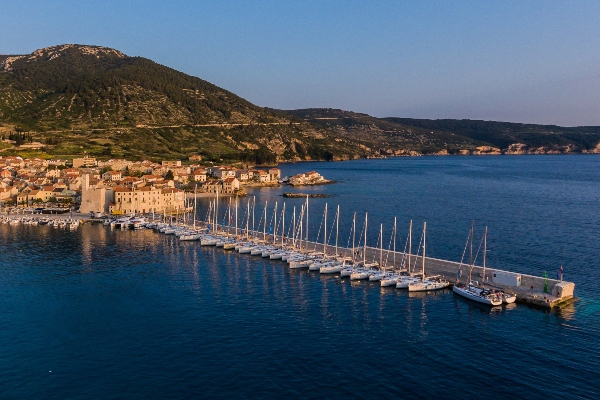
Crewed by five members, more than 100 falkuša sailboats operated in the Bay of Komiža in the 16th century. As the sea was swarmed with boats to Palagruža, it became impossible to determine who would receive the best fishing position. Thus, in 1593, the first ‘Komiška Regata’ race was held, which rewarded the winners with the best fishing positions for the entire season. Unfortunately, the last fishing Falkuša boat sank in a storm in 1986, though its remains can be found at the Komiža Fishermen’s Museum today. The importance of this boat is confirmed by the fact that it represented Croatia at the World Exhibition – EXPO in 1998 in Portugal, and it is listed as a Croatian cultural intangible good.
However, it was under Austrian rule that Komiža experienced the most growth in the fishing industry. The town boasted seven fish processing factories in the early 20th century, the largest of which (Fratelli Mardešić) exported sardines to America. But as the Austro-Hungarian Empire fell, the town’s fishing success dwindled. Komiža fishermen were forced to look elsewhere and emigrated with their fishing expertise to North America, particularly California. The city of San Pedro boasts 10 times more Komiža people than inhabitants in Komiža today. To put things into perspective, during the Komiža fishing boom of the early 20th century, the island town inhabited over 5000 people. Komiža has only 1500 inhabitants today!
Because Vis was isolated as a military zone after World War II, many of Komiža’s inhabitants moved to the mainland.
With them went the town’s fishing industry as the last fish processing facilities closed. In 1993, the municipality of Komiža was rebuilt and received the status of a city in 1997. Today, the town of Komiža has around 60 professional fishermen.
St. Nicholas Day in Komiža
According to a centuries-old tradition, every year on December 6 (St. Nicholas Day and Komiža City Day), a wooden boat is set ablaze in front of the parish church of St. Nicholas as a sacrifice to protect all sailors and the town. St. Nicholas, the patron saint of the town, is the protector of sailors, fishermen, voyagers, and traders.
In ancient times, the burning of wooden ships was done to extract the ironworks from the boat, which was valued at the time.
As the cheap wooden boat burned, the shackles and nails were saved for the next ship. Today, this shipbuilding practice is meaningless, but the age-old custom has been maintained among locals as traditional worship of the heavenly patron. Komiža locals see it as a final farewell to the ships that have given life to the town for centuries.
Why sail to Komiža?
Komiža’s vibrant fishing history is just part of why you should sail this island town on your next yacht charter. However, if you want to dig deeper, check out the Komiža Fishermen’s Museum, housed in a 16th-century waterfront Venetian tower, to learn more about its fishing history and Gajeta Falkuša boats.
Another perk? Komiža is located just five nautical miles from the Blue Cave on Biševo Island. A unique natural phenomenon, a cerulean hue paints the Blue Cave as the sunlight breaks through its opening. As a result, it is one of Dalmatia’s most sought-after tourist attractions!
You can’t visit Komiža without witnessing its military history. As a major military base for the Yugoslav army during World War II, Komiža is enhanced by fortresses, military subways, and tunnels, all of which you can explore on the island today.
And to top it all off - did you know that the World Wide Fund for Nature (WWF) named Komiža one of the 10 most recent heavenly oases in the Mediterranean? We rest our case.

Share your holiday details with your holiday expert and they will call you and help you with any topic you need help with.
Average response time: 30 min.








